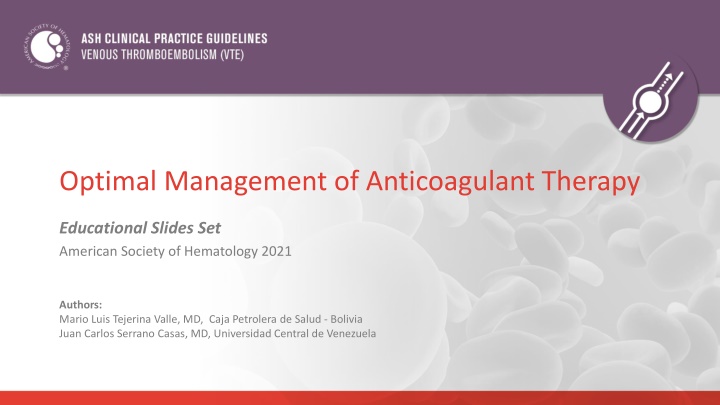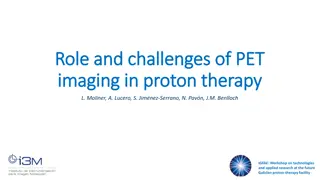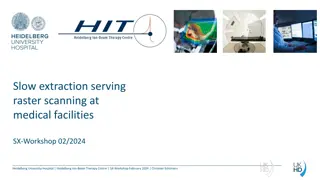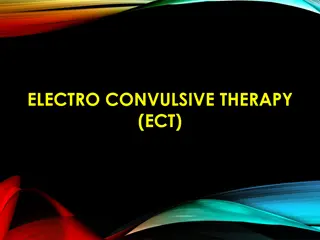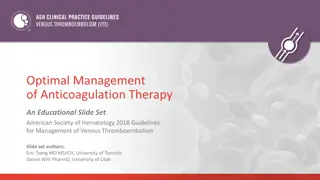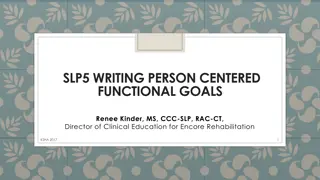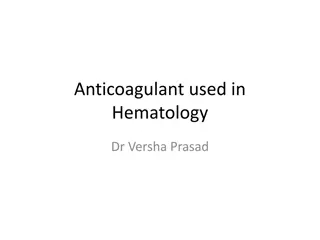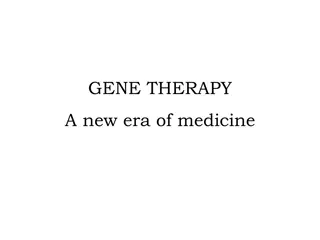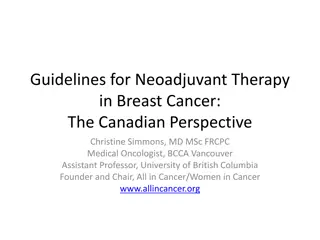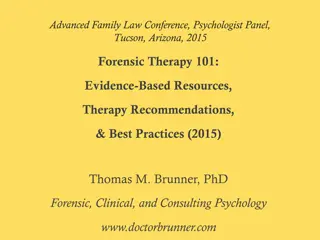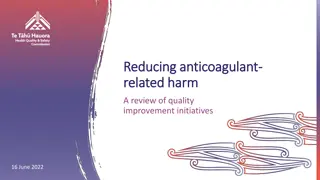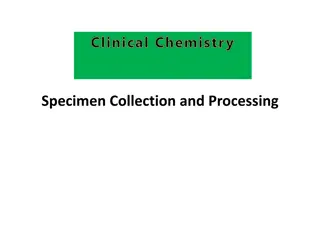Optimal Management of Anticoagulant Therapy
The American Society of Hematology (ASH) provides clinical guidelines for managing venous thromboembolism in Latin America. The Latin American ADOLOPMENT project is a collaboration effort involving various institutions to develop recommendations based on evidence. ASH's clinical practice guidelines cover VTE diagnosis, prevention, treatment, anticoagulation therapy, cancer patients, HIT, thrombophilia, pediatric VTE, and more.
Download Presentation

Please find below an Image/Link to download the presentation.
The content on the website is provided AS IS for your information and personal use only. It may not be sold, licensed, or shared on other websites without obtaining consent from the author.If you encounter any issues during the download, it is possible that the publisher has removed the file from their server.
You are allowed to download the files provided on this website for personal or commercial use, subject to the condition that they are used lawfully. All files are the property of their respective owners.
The content on the website is provided AS IS for your information and personal use only. It may not be sold, licensed, or shared on other websites without obtaining consent from the author.
E N D
Presentation Transcript
Optimal Management of Anticoagulant Therapy Educational Slides Set American Society of Hematology 2021 Authors: Mario Luis Tejerina Valle, MD, Caja Petrolera de Salud - Bolivia Juan Carlos Serrano Casas, MD, Universidad Central de Venezuela
Clinical Guidelines American Society of Hematology 2021 Guidelines for management of venous thromboembolism in Latin America Ignacio Neumann, Ariel Izcovich, Ricardo Aguilar, Guillermo Le n Basantes, Patricia Casais, Cecilia Colorio, Cecilia Guillermo, Pedro Garcia Lazaro, Jaime Pereira, Luis Meillon, Suely Meireles Rezende, Juan Carlos Serrano, Mario Luis Tejerina Valle, Felipe Vera, Lorena Karzulovic, GabrielRada, Holger Schunemann. Neumann I, Izcovich A, Aguilar R, et al. ASH, ABHH, ACHO, Grupo CAHT, Grupo CLAHT, SAH, SBHH, SHU, SOCHIHEM, SOMETH, Sociedad Paname a de Hematolog a, SPH, and SVH 2021 guidelines for management of venous thromboembolism in Latin America. Blood Adv. 2021;5(15):3032-3046.
Latin American ADOLOPMENT project The Latin American ADOLOPMENT project is a pilot collaborative effort of the following institutions Argentine Society of Hematology (SAH) Cecilia Colorio, MD Bolivian Society of Hematology and Hemotherapy (SBHH) Mario Luis Tejerina Valle, MD Brazilian Association of Hematology, Hemotherapy and Cellular Therapy (ABHH) Suely Meireles Rezende, MD PhD Chilean Society of Hematology Jaime Pereira, MD Peruvian Society of Hematology (SPH) Pedro Garc a L zaro, MD Society of Hematology of Uruguay (SHU) Cecilia Guillermo, MD Venezuelan Society of Hematology (SVH) Juan Carlos Serrano, MD Latin American Cooperative Group of Hemostasis and Thrombosis (CLAHT) Patricia Casais, MD Mexican Association of Hematology Luis Meillon MD Colombian Association of Hematology and Oncology Guillermo Basantes MD American Society of Hematology MacGRADE Center GRADE-ADOLOPMENT is an explicit and systematic method to adopt, adapt or develop recommendations based on evidence starting from an existing recommendation developed under GRADE approach. GRADE Evidence to Decision frameworks for adoption, adaptation, and de novo development of trustworthy recommendations: GRADE-ADOLOPMENT (J Clin Epidemiol. 2017 Jan; 81:101-110).
ASH Clinical Practice Guidelines on VTE 1. 2. 3. 4. 5. 6. 7. 8. 9. 10. VTE Diagnosis VTE prevention in hospitalized surgical patients VTE prevention in hospitalized medical patients Acute VTE Treatment (DVT y PE) Optimum Management of Anticoagulation Therapy VTE Prevention and Treatment in cancer patients Heparin-induced Thrombocytopenia (HIT) Thrombophilia Pediatric VTE VTE in the context of pregnancy
How are the ASH Guidelines developed? PANEL CONFIRMATION Each panel was formed based on key criteria: Balanced experience (including disciplines beyond hematology and patients) Attention to COI minimization and management CLINICAL QUESTIONS 10 to 20 clinically relevant questions worked out on PICO format (population, intervention, comparison and outcome) SYNTHESIS OF EVIDENCES Analysis of evidence of each PICO question x systematic review of effects: Desirable and Undesirable Effects Use of Resources Feasibility Acceptability Accessibility Patient Values and Preferences RECORD OF RECOMMENDATIONS Recommendations made by panel members based on evidences of all factors EXAMPLE OF PICO QUESTION Should antithrombotic agents be administered early or late to patients submitted to surgery?
How should patients and physicians use these guidelines? STRONG Recommendation ( The panel recommends ) CONDITIONAL Recommendation ( The panel suggests ) Most individuals will be for the intervention Most individuals will be for the intervention, but several will not. For Patients Different adequate options for different patients, depending on their values and preferences. Make use of shared decisions. Most individuals should receive intervention. For Doctors
Goals 1. By the end of this session, you will be prepared to: 2. Define the level of care and type of initial anticoagulation of VTE patients 3. Establish the anticoagulation period according to the VTE event, provoked or not provoked with or without recurrence, with new VTE events under anticoagulation 4. Determine the role of both scores of recurrence and D-dimer in provoked events. 5. Management of complications due to anticoagulation
What is this chapter about? Recognition and mitigation of the risks of damage from anticoagulants is achieved thru a management approach based on evidences Anticoagulants bring benefits (reduction in thrombus extension, mortal PE) and risks (potentially lethal hemorrhage) This chapter focus on the optimal management of anticoagulants for the prevention and treatment of TVE (after choosing the anticoagulant).
Case 1: New deep venous thrombosis and acute pulmonary embolism Male - 58 years of age Previous pathological history: Post-Operative between right kneecap replacement (TKR), AHT, chronic ischemic cardiomyopathy, overweight (BMI 29) Medication: Losartan, Carvedilol, ASA 100 mg/day Clinical Profile: Chest pain for 24 hours associates to mild moderate dyspnoea. Pain on right leg, AT 110/77 mmHg, pulse 96/min, RF 24/min SO2 92%. Increase of volume and pain over the entire right inferior limb from the last 72, lab: Dimer- D elevated, normal renal and hepatic functions, Scan Duplex showed extensive DVT of femoral and right popliteal vein, Femoral DVT in Scan duplex. AngioTAC: Subsegmental Pulmonary embolism without Right Ventricular dysfunction on Echocardiogram. Diagnosis: Proximal Deep Vein Thrombosis complicated with pattern provoked pulmonary embolism
Considering his clinical condition of low risk and hemodynamic stability; How would you consider to conduct his treatment? a)Fibrinolytic therapy, hospitalized b) Hospitalized treatment with the use of unfractionated heparin and then Warfarin c)Outpatient management with the use of DOACs exclusively d)Short hospitalization with LMWH, but outpatient management mainly and then DOAC or Warfarin according to availability C and D are correct
Recommendations Evidence of low quality, therefore benefit/ damage is uncertain. The panel also considered: This recommendation is not applicable to patients with other major risk conditions that require hospitalization, limited support or none at home, cannot afford drugs or have a history of deficient non- compliance. High risk of bleeding may also need to start treatment at the hospital. The treatment at home may not be feasible in certain contexts due to health system limitations or insurance policy restrictions For patients with PE and low complication risks, the Latin American Panel suggests treatment at home or hospital treatment (conditional recommendation, based on a very low certainty of the evidence on the effects). Absolute Anticipated Effects (95% CI) Results (Quality of Evidence) Relative Risk (95% CI) Risk with Hospitalized Treatment Risk with Outpatient treatment 4 minus per 1000 (6 minus to 42 plus) RR 0.33 (0.01 - 7..98) Mortality 6 per 1000 RR 2.95 (0.12-71.85) PE 0 per 1000 0 por 1000 0 x 1000 (0 x 1000 Not estimable Proximal Symptomatic DVT 0 x 1000 RR 6.88 (0.36. - 134,1) Greater Bleeding 0 per 1000 0 x 1000 Evidence Quality (GRADE): Low Moderate Strong
Pesi score for PE severity classification Table 1: Original and simplified Pulmonary Embolism Severity Index (PESI). Variable PESI (a) Original Score PESI (b) Simplified Score Age> 80 years Age in years 1 Fibrinolysis in Acute Pulmonary Embolism in cases with clear haemodynamic instability Male +10 - History of Cancer +30 1 History of Heart Failure +10 1 (c) History of Chronic Pulmonary Disease +10 Pulse 110 beats /minute +20 1 Systolic Arterial pressure < 100 mm Hg +30 1 PATIENT CLASS I Low Risk Respiratory Frequency 30 x min +20 - Temperature < 36 C +20 - Altered Mental Status* +60 - Arterial Oxygen Saturation < 90%* +20 1 The patient total punctuation is obtained by adding up patient age in year and the points of each predictor when present. The score corresponds to the following risk classes: class I ( 65 points), class II (66-85 points), class III (86-105 points), class IV (106-125 points) and class V (> 125 points). Patients under risk classes I and II are defined as of low risk. (b) A patient total score is obtained by adding up the points. The score is sorted out according to the following risk classes: 0 low risk, 1 or more high risk. Empty cells S indicate that variables have not been included. (c) Variables have been combined into one sole category of Chronic Cardiopulmonary Disease. Jim nez D, Aujesky A, Moores L et al Grupo RIETE Simplificaci n del ndice de gravedad de la embolia pulmonar para el pron stico en pacientes con embolia pulmonar sintom tica aguda. Arch Intern Med. 2010; 170 (15): 1383-1389.
Recommendation Moderate Quality of evidence. The Panel also considers that: Patients well controlled and with no complications can remain with AVK. Cases de Novo may prefer DOAC with regards to safety, load of treatment, difficulties to monitor the INR. Increase vigilance for the risk of bleeding with DOAC, even more so when domiciled far away. For patients with con DVP or PE, the ASH Latin American Panel suggests the use of DOAC over AVK (conditional recommendation, based on moderate certainty of evidences about the effects). Evidences of Research There are no direct comparison trials between DOAC and HBPM on this indication Indirect Evidences: DOAC vs HBPM have been compared only on VTE prophylaxis trials on hip and knee replacements, where DOAC reduces the risk of DVT de TVP with no increase of bleeding. However, in prophylaxis for hospitalized medical patients, the use of DOAC increases bleeding if compared to HBPM Evidence Quality (GRADE): Low Moderate Strong
Case 1 (Continued): The patient was started on oral Rivaroxaban 15 mg every 12 hours for 21 days, then received 20 mg day for the following 3 and 6 months On day 2 of treatment, there is substantial improvement of the respiratory condition, but with development of much pain and functional helplessness and evaluations highlight a pronounced extensive DVT throughout the femoral vein. Assessed for vascular surgery to decide on the approach
The patient is assessed for Vascular Surgery, and the following proposals are discussed in the clinical team meeting; Which one do you agree with? A. Perform immediate surgical thrombectomy B. Keep only anticoagulation with Rivaroxaban for 3 to 6 months, individualizing recurrence risk. C. Perform IV thrombolysis D. Perform catheter guided thrombolysis.
Recommendation In patients with extensive proximal DVT, the ASH Latin American Panel suggests against the thrombolysis in addition to anticoagulation (conditional recommendation, based on low certainty of the evidence on the effects). Evidence of low quality, therefore benefit /damage is uncertain. The Panel also considered: Thrombolysis to be reasonable in cases of DVT threatening limbs, with severe symptoms that do not improve with anticoagulation only and or with iliofemoral DVT with high risk of PFS and low-medium risk of To take in account basal risks, patient preference and access to experimented care. Absolute Anticipated Effects (95% CI) Results (Quality of Evidence) Relative Risk (95% CI) Risk with anticoagulant + Thrombolysis Risk with anticoagulant 7 minus per 1000 (7 minus to 36 plus) RR 0.89 (0.46 - 1,69) Late Mortality High 67 per 1000 RR 1.33 (0.71 to 2.46) PE 0 per 1000 0 per 1000 Proximal symptomatic DVT RR 0.99 (0.56 to 1.76) 1 minus x 1000 (57 minus to 99 plus) High 130 x 1000 Post phlebitic syndrome RR 0.71 (0.60 to 0.85) 163 minus x 1000 (225 minus to 84 less ) High 563 per 1,000 RR 0.75 (0.39 to 1.42) 8 minus x 1000 (18 minus to 13 plus Leg ulcer High 30 per 1,000 Evidence Quality (GRADE): Low Moderate Strong
Case 1: Summary For patients with PE and low risk of complications, suggestion of treatment either at home or hospital, according to availability of resources. In case of low-risk PE or DVT plan the use of DOAC over AVK, even if well controlled patients can be maintained with AVK, in both cases monitor the risk of bleeding. Thrombolysis is not recommended in extensive proximal venous thrombolysis, for the prevention of postphlebitic syndrome.
Case 2: Deep venous thrombosis not provoked with high risk of bleeding Woman - 40 years of age Pathological History: Recurrent gastric peptic ulcer disease Medication: Esomeprazol 40 mg day Clinical Profile: As she rises from bed in the morning, she notices the development of edema and pain in the left inferior limb, difficulty to walk. Dimer-D on 1550 ug/L Scan Duplex showed left Ileofemoral DVT. Started treatment with Enoxaparin for 5 days then she is kept on Warfarin Thrombophilia profile negative Diagnosis: Proximal Deep Venous Thrombosis unprovoked
Considering her current clinical condition how long would you consider to give anticoagulation with warfarin? A. I would give anticoagulation for 2 months B. I would give anticoagulation for 3 to 6 months only C. I would give anticoagulation extended to beyond 3 6 months and would assess for the risk of thrombotic recurrence and bleeding D. I would give her anticoagulation indefinetely
Recommendation For patients with unprovoked PE or DVT, the ASH Latin American Panel suggests to keep anticoagulation indefinitely over the interruption after a period of 3 to 6 months (conditional recommendation based on the moderate certainty of the evidence on the effects). Absolute Anticipated Effects (95% CI) Moderate evidence, so the panel considered that: The individual risk of DVT recurrence, risk of bleeding, costs, access to follow up and monitoring should be considered, in addition to patient values and preferences. This recommendation is applied to patients with average risk of bleeding. The risk of bleeding may change with time, benefit vs risk of anticoagulation should be reassessed periodically. Results (Evidence Quality) Relative Risk (95% CI) Risk with defined antithrombotic duration (12 months or less) Risk with undefined antithrombotic duration RR 0.75 (0.49 -1.13) 5 minus per 1,000 (9 minus to 2 plus) Mortality 18 por 1,000 RR 0.29 (0.15 -0.56) 21 minus per 1,000 (25 minus to 13 minus) PE 29 por 1,000 Proximal symptomatic DVT. RR 0.20 (0.12 to 0.34) 50 minus por 1,000 (56 minus to 42 minus) 63 per 1,000 RR 2.24 (1.49 to 3.35) 6 plus por 1,000 (2 plus to 12 plus) Major Bleeding 5 per 1,000 Evidence Quality (GRADE): Low Moderate Strong
VTE Recurrence Risk Unprovoked VTE VTE unprovoked (incidence VTE/years) Recurrence Risk after stopping anticoagulation 17.5% after 2 years 1) Acute Episode of VTE effectively treated. 24.6% after 5 years 2) Intrinsic Risk of each case in VTE 30.3% after 8 years 1. Prandoni P et al. Ann Intern Med 1996; 2. Kearon C. Chest 2008
Stratification of the Recurrence Risk of VTE High Risk Moderate Risk Low Risk VTE in the last 3 months Deficiency of protein C, protein S or antithrombin Antiphospholipid syndrome Multiple thrombophilic anomalies VTE in the last 3-12 months Heterozygous V Leiden Factor 20210 prothrombin mutation Recurrent VTE Active Cancer VTE> 12 months before No other risk factors
Members of the medical team treating the patient discuss the possibility of using Dimer- D or recurrence clinical scores to guide the use of anticoagulation. Do you think this is a valid approach? YES NO
Recommendation For patients with unprovoked PE of DVT, the Latin American Panel suggests to be against the use of Dimer - D or prognosis scores to guide the duration of the anticoagulation (conditional recommendation based on low certainty on proofs of the effects) Absolute Anticipated Effects (95% CI) Evidence of low quality, uncertain benefits: Should guide towards recommendation 8, undefined anticoagulation is maintained with recurrence risk vs bleeding assessed with time Dimer-D only as part of a prognostic model may be useful to determine there is much indecision or difficult clinical situation. Results (Evidence Quality) Relative Risk (95% CI) Riesgo con anticoagulaci n no guiada Risk with anticoagulation guided by Dimer-D and scores RR 1.06 (0.07 to 18.30) 1 plus per 1,000 (9 minus to 168 plus) Mortality 1 per 1000 RR 0.16 (0.02 to 1.33) 8 minus por 1,000 (10 minus to 3 plus) PE 10 per 1000 . Proximal Symptomatic DVT HR 2.59 (1.90 to 3.52) 17 mas por 1000 (9 plus to 26 plus) 11 per 1000 RR 3.49 (0.14 to 84.76) 24 mas por 1,000 (8 minus to 813 plus) Major Bleeding 10 per 1000 Evidence Quality (GRADE): Low Moderate Strong
Continuacin Caso 2 Case 2 (continued) The patient was kept on anticoagulation with warfarin within therapeutic INR range, but as of the 7 month shows thrombotic recurrence whilst under treatment. What would be your anticoagulation strategy and for how long? A. B. C. D. I would increase the warfarin dose (INR 3 to 4) with indefinite anticoagulation I would change to DOAC within indefinite anticoagulation I would change to DOAC within definite period for a year assessing the recurrence risk I would recommend anticoagulation with HBPM, with re-assessment of causes of thrombosis, then defining what the most appropriate oral agent for indefinite use.
Recommendation For patients with DVT or PE during the VKA treatment, the ASH Latin American Panel suggests the use of LMWH over DOAC(conditional recommendation, based on a very low certainty of the evidence of the effects). Evidence of low quality, therefore the panel has also considered: To appraise the vast experience in HBPM for prothrombotic conditions. Not to demonstrate AVK in suboptimal range. A better dose adjustment must be guaranteed. The need to explore the underlying causes of the recurrence under AVK Final selection based on the underlying cause, patient values and preferences, cost and viability of each alternative. Research Evidences There are no direct comparison trials between DOAC and HBPM in this indication Indirect Evidence: DOAC vs HBPM have been compared in VTE prophylaxis trials in hip and knee replacement, in which DOAC reduces the risk of DTV and there is no bleeding increase. However, prophylaxis in hospitalized medical patients, the use of DOAC increases bleeding when compared to HBPM Evidence Quality (GRADE): Low Moderate Strong
Recommendation For patients with unprovoked recurrent PE or DVT, the ASH Latin American Panel recommends to maintain indefinite anticoagulation over the its interruption after a period of 3 to 6 months (strong recommendation, based on moderate certainty of the evidence on the effects). Strong evidence of Good quality, moderate certainty, the Benefit is clearer: This recommendation assumes the average risk of bleeding, it cannot be applied in cases with high probability of hemorrhage. The risk of bleeding may change with time, so the balance between desirable and undesirable consequences of indefinite anticoagulation must be often re-assessed Anticipated Absolute Effects (95% CI) Results (Evidence Quality) Riesgo Relativo (95% CI) Risk with defined duration anticoagulation (12 months or less) Risk with undefined duration anticoagulation RR 0.75 (0.49 to1.13) 4 minus per 1,000 (8 minus to 2 plus) Mortality 16 por 1000 21 minus per 1,000 (25 minus to 13 minus) RR 0.29 (0.15 to 0.56) PE 29 por 1000 Proximal Symptomatic DVT RR 0.20 (0.12 to 0.34) 50 minus per 1,000 (56 minus to 42 minus) 63 por 1000 RR 2.17 (1.40 to 3.35) 6 plus per 1,000 (2 plus to 12 plus) Major Bleeding 5 por 1000 Evidence Quality (GRADE): Low Moderate Strong
Recurrence Risk after suspending anticoagulation Observational Studies Data Event provoked by a transitory risk factor EVT recurrent = 4,2 per 100 patient-year PE recurrent = 1,9 per 100 patient-year DVT recurrent= 2,3 per 100 patient-year Unprovoked Event EVT recurrent = 7,4 per 100 patient-year PE recurrent = 3,3 per 100 patient-year DVT recurrent = 4,1 per 100 patient-year Event provoked by a chronic risk factor (cancer excluded) EVT recurrent = 9,7 per 100 patient-year PE recurrent = 4,4 per 100 patient-year DVT recurrent = 5,3 per 100 patient-year Recurrent Unprovoked Event EVT recurrent = 12 per 100 patient-year PE recurrent = 5,4 per 100 patient-year DVT recurrent = 6,6 per 100 patient-year * DVT and PE rates were calculated assuming that 45% de of recurrent EVT are PE. 1. Heit, John A., Spencer, Frederick A., White, Richard H.. The epidemiology of venous thromboembolism. Journal of Thrombosis and Thrombolysis; 01/16 2016. 2. Nordstrom, M., Lindblad, B., Bergqvist, D., Kjellstrom, T.. A prospective study of the incidence of deep-vein thrombosis within a defined urban population. J Intern Med; Aug 1992. 3. Oger, E.. Incidence of venous thromboembolism: a community-based study in Western France. EPI-GETBP Study Group. Groupe d'Etude de la Thrombose de Bretagne Occidentale. Thromb Haemost; May 2000.
Case 2: Summary For patients with unprovoked or recurrent unprovoked DTV or PE, suggestion to maintain indefinite anticoagulation over its interruption after a period of 3 to 6 months In cases of unprovoked PE or DVT, suggestion to oppose the use of Dimer-D or prognostic scores to guide the duration of the anticoagulation, except for some very complex situations In patients with DVT or PE during the VKA treatment, suggestion to use LMWH over DOAC initially, while a more efficient anticoagulation is proposed.
Caso 3. Complications due to anticoagulation Personal History: Hypertension, Chronic Renal Failure (no dialysis). Has not attended medical control for 3 months. Clinical Profile: Female patient, 58 years of age, on Warfarin for 1 month for prevention of recurrent unprovoked PTE. Goes to hospital complaining of headache, dizziness, vomit and difficulty to move around in those 6 previous hours. CAT of skull performed Subarachnoid hemorrhage Fisher 3 and the INR is 10. Diagnosis: Subarachnoid hemorrhage, Warfarin intoxication, recurrent PTE
Your patient is in vital emergency, with Hemorrhagic Cerebrovascular Accident (HCVA) and warfarin overdose. What would be the initial management recommendation to approach this case? A.Discontinue warfarin B.Give plasma fresh frozen plasma C.Give Vitamin K 5 mg IV D.Use of Prothrombin complex concentrate E. B and D are correct
Recommendation For patients with potential lethal bleeding related to AVK during the VTE treatment, the ASH Latin American Panel suggests the use of 4 factor PCC or PFC in addition to the interruption of AVK, according to local availability and clinical circumstances (conditional recommendation, based on a very low certainty of the evidence on the effects). Anticipated Absolute Effects (95% CI) Low quality evidence, therefore the panel also considered, (low certainty of the evidence on the effects) : There is no substantial evidence in safety and efficacy of results between CCP and PFC. To consider the use of CCP in cases of heart failure and volume overload, in addition zones with high risk of pathogen transmission. We should favor the fastest option according to local availability and costs in Latin America. Results (Evidence Quality) Relative Risk (95% CI) Risk with Frozen Fresh Plasma Risk with CCP RR 0.92 (0.37 a 2.28) 10 minus per 1000 (78 minus to 159 plus ) Mortality 124 per 1000 RR 1.60 (0.70 to 3.62) 41 plus per 1000 (20 minus a 179 plus) DVT (all) 68 per 1000 RR 1.34 (0.78 to 2.29) 31 plus per 1000 (20 minus to 117 plus) Major Bleeding 91 per 1000 Evidence Quality (GRADE): Low Moderate Strong
Case 3 (continued) The patient received successful surgical intervention, considering life threatening bleeding she had and the unprovoked recurrent thrombosis. What would be your treatment strategy? A. Discontinue anticoagulant due to high risk of new bleeding B. Re-start oral anticoagulation once she has been clinically recovered between 15 and 90 days C. Recommend HBPM in one week D. Recommend AAS
Recommendation For patients that receive treatment to VET and survive a major bleeding episode related to the anticoagulation therapy, the ASH Latin American Panel suggests to resume oral anticoagulation therapy upon interruption (conditional recommendation based on the very low certainty of the evidence on the effects). Resume vs interrupt anticoagulant treatment for VET in the wake of a major bleeding: Anticipated Absolute Effects (95% CI) Increased risk of recurrent hemorrhage offset by an improvement on mortality due to all causes Results (Evidence Quality) Relative Effect (95% CI) Risk with Discontinuation Difference of Risk with resume of anticoagulation 141 less deaths per 1000 (79 minus to 189 plus) RR 0.59 (0.45 to 0.77) Mortality 845 of 2,455 (34.4%) RR 0.26 (0.08 to 0.82) 21 less PE per 1000 ( 5 minus to 26 minus) PE 12 of 425 (2.8%) Applied to patients that require anticoagulation for long or indefinitely. Symptomatic Proximal DVT RR 0.66 (0.25 to 1.75) 8 less DVT per 1,000 (18 minus to 18 plus) 11 of 464 (2.4%) RR 1.54 (1.18 to 2.02) 38 more bleeding per 1000 (13 plus to 71 plus) Major Bleeding 230 of 3,304 (7.0%) Evidence Quality (GRADE): Low Moderate Strong
Comments The decision to resume anticoagulation may vary according to the risk of recurrent PTE and the risk and severity of bleeding. An approach of decisions shared that explore values given by patients to the prevention of PTE or bleeding may be a form of implementing the recommendation. Time to resume anticoagulation remains unknown and it varies depending on particularities of each patient. It is reasonable to consider waiting for at least 2 weeks, but no longer than 90 days after the bleeding episode. However, anticoagulation should be considered to resume as early sa possible if bleeding cause was identified and corrected.
Case 3 (continued) Patient and family members, considering the hemorrhagic risk, discuss the possibility of using antithrombotic drug of lower hemorrhagic risk, she is not a candidate to DOAC due to renal failure, Debate about the possibility of aspirin 100 mg day. Do you agree with this approach? YES NO
Recommendation Should Aspirin be used versus standard dose of anticoagulation in patients to whom an indefinite duration is preferred, after completing an initial anticoagulation course of defined duration (12 months or less). (Conditional Recommendation, based on a moderate certainty of the evidence). Anticipated Absolute Effects (95% CI) Evidence with moderate certainty, the benefit is clearer: Compared with long term anticoagulation , the treatment with Aspirin could increase the risk of VTE with all negative consequences (hospitalization costs, vs disease risks, etc.), The panel assumed that cost effectiveness favors long term anticoagulation. Results (Evidence Quality) Relative Risk (95% CI) Risk with standard anticoagulation Risk with aspirin RR 0.86 (0.31 to 2.35) 1 minus per 1000 (5 minus to 10 plus Mortality 7 per 1000 RR 3.10 (1.24 to 7.73) 11 plus per 1,000 (1 mas a 36 mas) PE 5 per 1000 Proximal Symptomatic DVT. RR 3.15 (1.50 to 6.63) 17 plus per 1000 (4 plus to 46 plus) 8 per 1000 3 menos per 1,000 (5 minus to 5 plus) RR 0.49 (0.12 to 1.95) Major Bleeding 5 per 1000 Evidence Quality (GRADE): Low Moderate Strong
Summary Case 3 For patients with potentially mortal bleeding related to AVK during the treatment of VTE, the use of 4 factor CCP or PFC is considered in addition to the interruption of AVK, according to local availability. For patients with VTE who require indefinite anticoagulation, consider the possibility of resuming anticoagulation within 15 to 90 days after a major hemorrhagic episode. For the use of long term antithrombotic agents, the use of Aspirin does not replace anticoagulants.
Other Guide Recommendations not approached in this discussion. Thrombolysis in submassive PE based with eco or biomarkers compatible with the right ventricle dysfunction. Use of compression stockings by patients with DVT and high risk of post-thrombotic syndrome. Use of DOAC standard dose vs lower doses in long term anticoagulation Use of Aspirin in cardiovascular primary prevention associated with chronic anticoagulation Definition of anticoagulation in recurrent provoked events and with persistent chronic factors Those first 4 recommendations with low or very low certainty of the evidence
Summary Back to Goals 1. Define the attention level and type of initial anticoagulation of patients with VTE Cases of low risk PE and DVT can be managed as out-patients, for initial anticoagulation ACOD, thrombolysis is not indicated for extensive DVT 2. Establish anticoagulation period in VTE, provoked and unprovoked with or without recurrence, with new VTE under anticoagulation In unprovoked recurrent VTE guidance towards indefinite anticoagulation 3. Determine the Role of recurrence and Dimer-D scores in unprovoked events. Not appropriate the use of Dimer-D and Score System to guide routine anticoagulation 4. Manage complications caused by anticoagulation Both CCP and PFC can be used to reverse Warfarin anticoagulation, in the wake of a severe hemorrhagic event, it is suitable to restart anticoagulation between 15 and 90 days
Gratitude Team members of the ASH Latin American Panel of Guidelines on VTE ASH Team Members GRADE Center - McMaster University ASH VTE Slide kit authors: Mario Luis Tejerina Valle, MD, Caja Petrolera de Salud - Bolivia Juan Carlos Serrano Casas, MD, Universidad Central de Venezuela For more information on the ASH Guidelines on VTE: www.hematology.org/VTE
